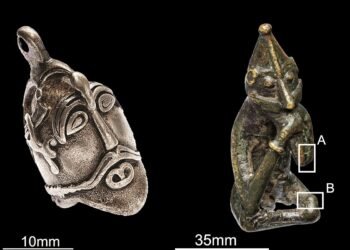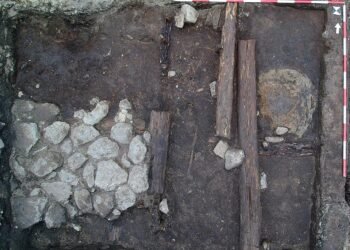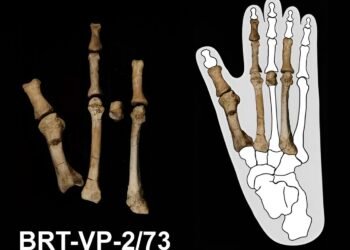Archaeologists in Nanjing, China, have unearthed the ancient city of Changgan, immortalized in the poetry of Tang Dynasty literati Li Bai.

This significant find, located near the Porcelain Tower of Nanjing, has pushed back the recorded history of Nanjing by an astonishing 600 years, challenging previous beliefs about the city’s origins.
Dating back over 3,000 years, the site offers a view into the Shang (1600 BCE-1046 BCE) and Zhou (1046 BCE-256 BCE) dynasties, with notable evidence of occupation during the Tang period. The excavations have revealed circular trenches, wall foundations, water wells, and a sacrificial pit for swine, indicating the city’s strategic and ritualistic aspects.
“In ancient times, trenches played a crucial role in a city’s defense. Therefore, the presence of a defensive system featuring trenches and walls is a significant indication of an ancient city,” said Chen Dahai, the lead archaeologist and associate professor at the Nanjing Archaeological Research Institute.
Wang Wei, chairman of the China Council of Archaeology stated that the dating of the discovery places it around 3,100 years ago. It stands as a remarkable archaeological find in Nanjing in 2023. He further highlighted the artifacts unearthed, including ceramic pieces with triangular decorations, dingwares used as ritual food vessels, and swine bones.
Notably, the pottery adorned with triangular decorations reflects cultural exchanges between northern and southern China during that era, as archaeologist Wang Meng, a specialist in Shang and Zhou dynasty archaeology told the Global Times.
The Nanjing Institute of Archaeology, after six years of collaboration with basic urban construction, has unearthed more than 500 relics and over 10,000 archaeological specimens from a total excavation area of 12,000 square meters.
The Changgan Ancient City is located in Nanjing’s West Street Ruins and near another historical site called the Porcelain Tower of Nanjing, also known as Dabaoen Temple. The city, with its moats, wall foundations, and sacrificial pits, served as a military fortress, strategically positioned amidst natural barriers like the Yangtze River and Qinhuai River, hills, and ridges.
Plans are underway to transform it into an archaeological site park, ensuring the preservation of its historical significance and allowing the public to engage with the rich history of Nanjing.























